     
|
Mende in Lozère (Occitanie)
|
     
|
Mende, a discreet prefecture with a rich past, flourishes in the valley of the Lot, in the department of Lozère. Its history is closely linked to that of the powerful bishops of Gévaudan, who made the city an influential religious and political center as early as the Middle Ages. The built heritage bears witness to this past grandeur, notably with the majestic Cathedral of Notre-Dame-and-Saint-Privat, rebuilt after the Wars of Religion, whose atypical bell tower proudly dominates the urban landscape. The narrow streets and timber-framed houses of the old town invite leisurely strolls through time, revealing architectural treasures. The city also retains the remnants of an ancient Romanesque bridge, the Notre-Dame bridge. Surrounded by the wild landscapes of the Cévennes and Aubrac, Mende serves as a gateway to preserved nature and authentic local culture.

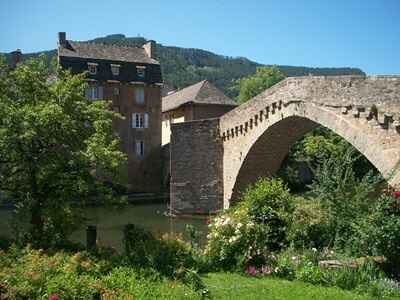 Mende is a city located in the Lozère department, in the Occitanie region, in southern France. It is the prefecture of this department.It has a rich architectural heritage, with historical buildings such as the Notre-Dame-et-Saint-Privat Cathedral, the Notre-Dame bridge, and the Penitents’ tower. The city is also known for its annual classical music festival, the Mende Music Festival, which takes place every summer.Mende is also an ideal starting point to explore the surrounding region, which includes the Tarn gorges, the Aubrac mountains, and the Cévennes, as well as many picturesque villages. Outdoor activities such as hiking, mountain biking, and fishing are very popular in the region.
Mende is a city located in the Lozère department, in the Occitanie region, in southern France. It is the prefecture of this department.It has a rich architectural heritage, with historical buildings such as the Notre-Dame-et-Saint-Privat Cathedral, the Notre-Dame bridge, and the Penitents’ tower. The city is also known for its annual classical music festival, the Mende Music Festival, which takes place every summer.Mende is also an ideal starting point to explore the surrounding region, which includes the Tarn gorges, the Aubrac mountains, and the Cévennes, as well as many picturesque villages. Outdoor activities such as hiking, mountain biking, and fishing are very popular in the region.
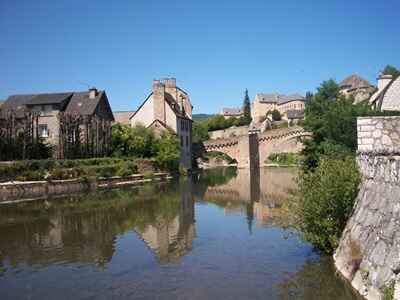 It was the capital of Gévaudan. Since the 10th century, it has been the seat of the Mimatensis bishopric, created after the decline of the one in Javols. The current city was founded in the 5th century on the tomb of Saint Privat, by the Lot River. Mende is the capital of Lozère. The city is precisely located in the center of the department. In less than a century, while Lozère lost fifty percent of its population, the capital saw its numbers rise from 8,000 to 12,000 souls. This increase came at the expense of the villages in the region. Mende is traversed by the Lot, which springs up near Bleymard, and this river not only divides the city in two but nearly the entire department. The Lot brings relative wealth to the municipalities it passes through, and its valley is quite fertile.
It was the capital of Gévaudan. Since the 10th century, it has been the seat of the Mimatensis bishopric, created after the decline of the one in Javols. The current city was founded in the 5th century on the tomb of Saint Privat, by the Lot River. Mende is the capital of Lozère. The city is precisely located in the center of the department. In less than a century, while Lozère lost fifty percent of its population, the capital saw its numbers rise from 8,000 to 12,000 souls. This increase came at the expense of the villages in the region. Mende is traversed by the Lot, which springs up near Bleymard, and this river not only divides the city in two but nearly the entire department. The Lot brings relative wealth to the municipalities it passes through, and its valley is quite fertile.
Witness Chanac, of which it is said that if Lozère were a sheep, Chanac would be its kidney. The valley of the Altier, whose waters are less sluggish than those of the Lot because they originate in a more pastoral environment on the slopes of Mont Lozère, is less rich. A narrow valley that only opens up in rare spots, very timidly, and is thus less rich than the valley of the Lot. However, the engineers from E.D.F. have tamed the Altier, whose waters feed the Villefort dam. Thus, the river brings a different kind of wealth than the Lot. The two valleys complement each other, one having an agricultural vocation and the other an industrial one... and as for Mende, its population is largely made up of civil servants.
A small town in Roman times called "Viculus Mimatensis." The city's expansion occurred in the 3rd century: Bishop Saint-Privat, pursued by barbarians, sought refuge in Mende where he was killed; the caves he occupied and the place where he was buried became pilgrimage sites around which the city developed.
 In 1161, Aldebert was granted a charter giving him sovereignty over Gévaudan; but he had to fight against the lords and then surrounded the city with fortifications. However, a partition act was signed in 1307 by the bishop with Philippe-le-Bel, and the city became the civil and religious capital of Gévaudan. This city, barely recovering from the disasters of the Hundred Years' War, suffered a Protestant attack led by the young Huguenot captain Mathieu Merle, who took it and occupied it for two years. In the 19th century, Mende was essentially an administrative center where a few industries developed.
In 1161, Aldebert was granted a charter giving him sovereignty over Gévaudan; but he had to fight against the lords and then surrounded the city with fortifications. However, a partition act was signed in 1307 by the bishop with Philippe-le-Bel, and the city became the civil and religious capital of Gévaudan. This city, barely recovering from the disasters of the Hundred Years' War, suffered a Protestant attack led by the young Huguenot captain Mathieu Merle, who took it and occupied it for two years. In the 19th century, Mende was essentially an administrative center where a few industries developed.
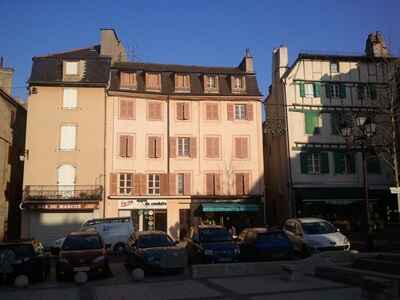 The prefecture of Lozère is the former capital of Gévaudan. It is an excellent starting point to visit the region of the Great Causses and the Tarn Gorges. Its cathedral, built in the 14th century (with the bell tower from the 16th century), once had the largest bell in Christendom, the Non Pareille. Destroyed in 1579 during the Wars of Religion by the Protestant troops of Captain Merle, today only the clapper, 2.15m high, remains. The Notre-Dame bridge, from the 14th century, has always withstood the severe floods of the Lot due to the wide opening of its central arch.
The prefecture of Lozère is the former capital of Gévaudan. It is an excellent starting point to visit the region of the Great Causses and the Tarn Gorges. Its cathedral, built in the 14th century (with the bell tower from the 16th century), once had the largest bell in Christendom, the Non Pareille. Destroyed in 1579 during the Wars of Religion by the Protestant troops of Captain Merle, today only the clapper, 2.15m high, remains. The Notre-Dame bridge, from the 14th century, has always withstood the severe floods of the Lot due to the wide opening of its central arch.
From Mende, taking the D25 southward, you arrive at the viewpoint of Mont Mimat, from where the view extends over the Aubrac mountains and the Lot valley. From there, a small path leads to the hermitage of St Privat, clinging to the cliff.
Mende, the smallest prefecture in France, is a true city in the countryside, nestled against the causse and divided in two by the Lot, leaving the historic city on one side and the residential areas on the other. The people of Mende owe the hermitage on Mont Mimat to Saint Privat and the cathedral of Mende to Urbain V. It is fitting to attribute to them the preservation of their entire architectural heritage. Indeed, in Mende, we love architecture, sculpture, and simply beauty, and we showcase it as a banner.
The weathered houses, the cobbled streets, and the slate roofs, together with the region's heritage, constitute a major asset that is important to discover. That is why the tourist office organizes a discovery hike through the streets of the old town every summer and a night musical promenade around the most beautiful monuments of the municipality. A guide is available for those who wish, but well-informed markers allow visitors to learn everything about Mende's architectural heritage.
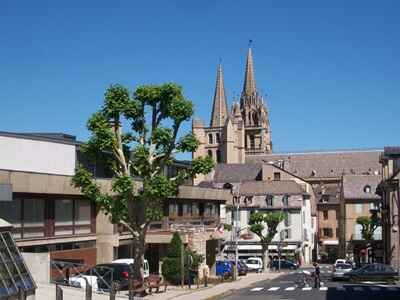 Neither too big nor too small, Mende offers exceptional quality of life, a perfect balance between city and countryside that it gladly shares with passing visitors. Remarkably located between the Margeride to the north and the Causses to the south, Mende is also a strategic point for all the visits one can make in the department. However, to know all the details, it will be necessary to spend a few days in the former capital of Gévaudan and today's prefecture of Lozère.
Neither too big nor too small, Mende offers exceptional quality of life, a perfect balance between city and countryside that it gladly shares with passing visitors. Remarkably located between the Margeride to the north and the Causses to the south, Mende is also a strategic point for all the visits one can make in the department. However, to know all the details, it will be necessary to spend a few days in the former capital of Gévaudan and today's prefecture of Lozère.
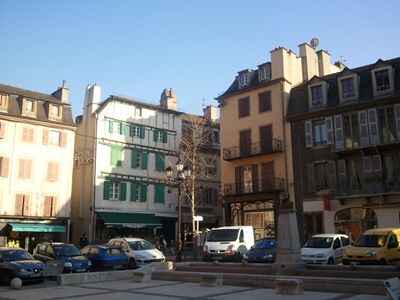 Mende is also the most sports-oriented city in France, proof of unwavering dynamism. A city that nurtures the rightful ambition of becoming a real city like those with which it is compared. A real city, but without the constraints of its larger sisters, a city simply surrounded by the comforts of the countryside and escape. A business incubator is under construction, and these should be oriented towards new communication technologies. The connection to the Estelle city network with Rodez, Aurillac, and Le Puy-en-Velay also points toward an openness to the future, toward the outside world.
Mende is also the most sports-oriented city in France, proof of unwavering dynamism. A city that nurtures the rightful ambition of becoming a real city like those with which it is compared. A real city, but without the constraints of its larger sisters, a city simply surrounded by the comforts of the countryside and escape. A business incubator is under construction, and these should be oriented towards new communication technologies. The connection to the Estelle city network with Rodez, Aurillac, and Le Puy-en-Velay also points toward an openness to the future, toward the outside world.
Finally, in an effort to lift our gaze to the stars, a vast tourism complex oriented toward the sky is taking shape. We should soon be able to observe the stars from Mimata, an astronomical observation center equipped with a large telescope located on the causse of Mende.
Mende, a historic city marked by the seal of history, is resolutely turned toward the future, toward the modern era. Its markets, its monthly fair, and its small traditional shops, characteristic of small municipalities, take nothing away from it. On the contrary, in Mende, commerce, like life in the countryside, is built on contact and friendship. For the rest, there is time to not rush.
In Mende, above all, we want to live well. A short stay at the foot of the Penitents’ tower or around the Saint-Privat Cathedral will allow you to realize that Mende is truly a charming city just a stone's throw from the countryside.
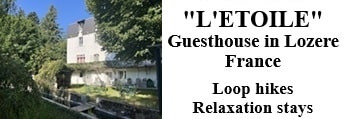
Former holiday hotel with a garden along the Allier, L'Etoile Guest House is located in La Bastide-Puylaurent between Lozere, Ardeche, and the Cevennes in the mountains of Southern France. At the crossroads of GR®7, GR®70 Stevenson Path, GR®72, GR®700 Regordane Way, GR®470 Allier River springs and gorges, GRP® Cevenol, Ardechoise Mountains, Margeride. Numerous loop trails for hiking and one-day biking excursions. Ideal for a relaxing and hiking getaway.
Copyright©etoile.fr

 Mende is a city located in the Lozère department, in the Occitanie region, in southern France. It is the prefecture of this department.It has a rich architectural heritage, with historical buildings such as the Notre-Dame-et-Saint-Privat Cathedral, the Notre-Dame bridge, and the Penitents’ tower. The city is also known for its annual classical music festival, the Mende Music Festival, which takes place every summer.Mende is also an ideal starting point to explore the surrounding region, which includes the Tarn gorges, the Aubrac mountains, and the Cévennes, as well as many picturesque villages. Outdoor activities such as hiking, mountain biking, and fishing are very popular in the region.
Mende is a city located in the Lozère department, in the Occitanie region, in southern France. It is the prefecture of this department.It has a rich architectural heritage, with historical buildings such as the Notre-Dame-et-Saint-Privat Cathedral, the Notre-Dame bridge, and the Penitents’ tower. The city is also known for its annual classical music festival, the Mende Music Festival, which takes place every summer.Mende is also an ideal starting point to explore the surrounding region, which includes the Tarn gorges, the Aubrac mountains, and the Cévennes, as well as many picturesque villages. Outdoor activities such as hiking, mountain biking, and fishing are very popular in the region. It was the capital of Gévaudan. Since the 10th century, it has been the seat of the Mimatensis bishopric, created after the decline of the one in Javols. The current city was founded in the 5th century on the tomb of Saint Privat, by the Lot River. Mende is the capital of Lozère. The city is precisely located in the center of the department. In less than a century, while Lozère lost fifty percent of its population, the capital saw its numbers rise from 8,000 to 12,000 souls. This increase came at the expense of the villages in the region. Mende is traversed by the Lot, which springs up near Bleymard, and this river not only divides the city in two but nearly the entire department. The Lot brings relative wealth to the municipalities it passes through, and its valley is quite fertile.
It was the capital of Gévaudan. Since the 10th century, it has been the seat of the Mimatensis bishopric, created after the decline of the one in Javols. The current city was founded in the 5th century on the tomb of Saint Privat, by the Lot River. Mende is the capital of Lozère. The city is precisely located in the center of the department. In less than a century, while Lozère lost fifty percent of its population, the capital saw its numbers rise from 8,000 to 12,000 souls. This increase came at the expense of the villages in the region. Mende is traversed by the Lot, which springs up near Bleymard, and this river not only divides the city in two but nearly the entire department. The Lot brings relative wealth to the municipalities it passes through, and its valley is quite fertile. In 1161, Aldebert was granted a charter giving him sovereignty over Gévaudan; but he had to fight against the lords and then surrounded the city with fortifications. However, a partition act was signed in 1307 by the bishop with Philippe-le-Bel, and the city became the civil and religious capital of Gévaudan. This city, barely recovering from the disasters of the Hundred Years' War, suffered a Protestant attack led by the young Huguenot captain Mathieu Merle, who took it and occupied it for two years. In the 19th century, Mende was essentially an administrative center where a few industries developed.
In 1161, Aldebert was granted a charter giving him sovereignty over Gévaudan; but he had to fight against the lords and then surrounded the city with fortifications. However, a partition act was signed in 1307 by the bishop with Philippe-le-Bel, and the city became the civil and religious capital of Gévaudan. This city, barely recovering from the disasters of the Hundred Years' War, suffered a Protestant attack led by the young Huguenot captain Mathieu Merle, who took it and occupied it for two years. In the 19th century, Mende was essentially an administrative center where a few industries developed. The prefecture of Lozère is the former capital of Gévaudan. It is an excellent starting point to visit the region of the Great Causses and the Tarn Gorges. Its cathedral, built in the 14th century (with the bell tower from the 16th century), once had the largest bell in Christendom, the Non Pareille. Destroyed in 1579 during the Wars of Religion by the Protestant troops of Captain Merle, today only the clapper, 2.15m high, remains. The Notre-Dame bridge, from the 14th century, has always withstood the severe floods of the Lot due to the wide opening of its central arch.
The prefecture of Lozère is the former capital of Gévaudan. It is an excellent starting point to visit the region of the Great Causses and the Tarn Gorges. Its cathedral, built in the 14th century (with the bell tower from the 16th century), once had the largest bell in Christendom, the Non Pareille. Destroyed in 1579 during the Wars of Religion by the Protestant troops of Captain Merle, today only the clapper, 2.15m high, remains. The Notre-Dame bridge, from the 14th century, has always withstood the severe floods of the Lot due to the wide opening of its central arch. Neither too big nor too small, Mende offers exceptional quality of life, a perfect balance between city and countryside that it gladly shares with passing visitors. Remarkably located between the Margeride to the north and the Causses to the south, Mende is also a strategic point for all the visits one can make in the department. However, to know all the details, it will be necessary to spend a few days in the former capital of Gévaudan and today's prefecture of Lozère.
Neither too big nor too small, Mende offers exceptional quality of life, a perfect balance between city and countryside that it gladly shares with passing visitors. Remarkably located between the Margeride to the north and the Causses to the south, Mende is also a strategic point for all the visits one can make in the department. However, to know all the details, it will be necessary to spend a few days in the former capital of Gévaudan and today's prefecture of Lozère. Mende is also the most sports-oriented city in France, proof of unwavering dynamism. A city that nurtures the rightful ambition of becoming a real city like those with which it is compared. A real city, but without the constraints of its larger sisters, a city simply surrounded by the comforts of the countryside and escape. A business incubator is under construction, and these should be oriented towards new communication technologies. The connection to the Estelle city network with Rodez, Aurillac, and Le Puy-en-Velay also points toward an openness to the future, toward the outside world.
Mende is also the most sports-oriented city in France, proof of unwavering dynamism. A city that nurtures the rightful ambition of becoming a real city like those with which it is compared. A real city, but without the constraints of its larger sisters, a city simply surrounded by the comforts of the countryside and escape. A business incubator is under construction, and these should be oriented towards new communication technologies. The connection to the Estelle city network with Rodez, Aurillac, and Le Puy-en-Velay also points toward an openness to the future, toward the outside world.